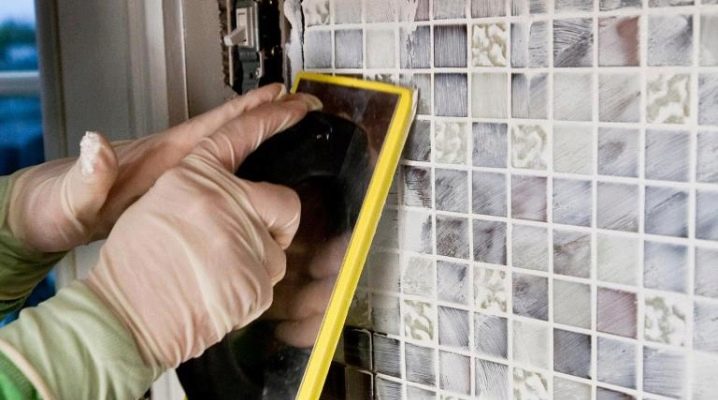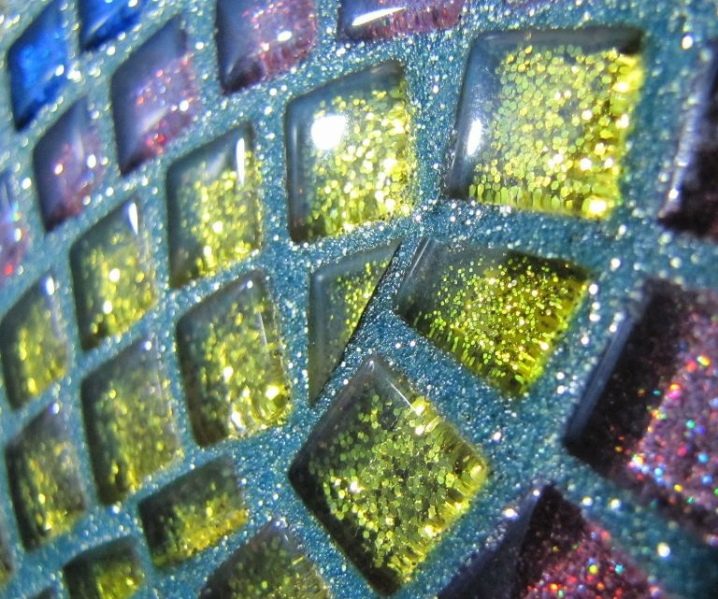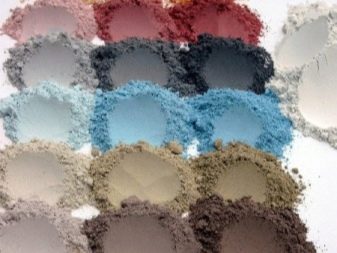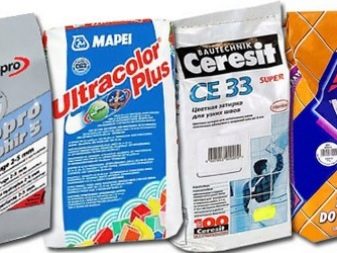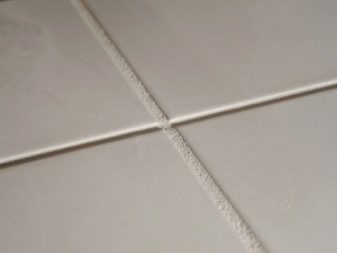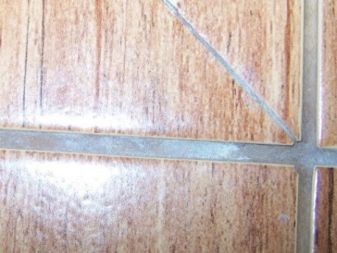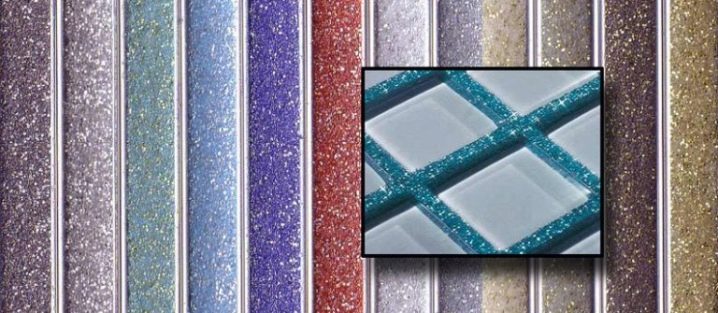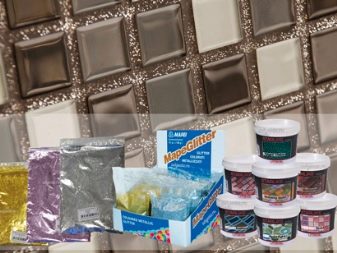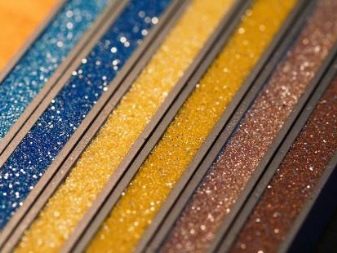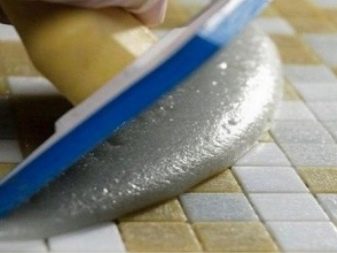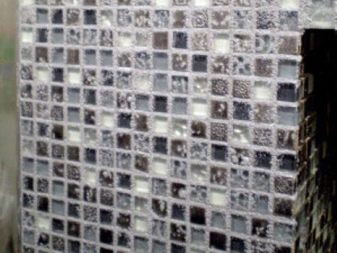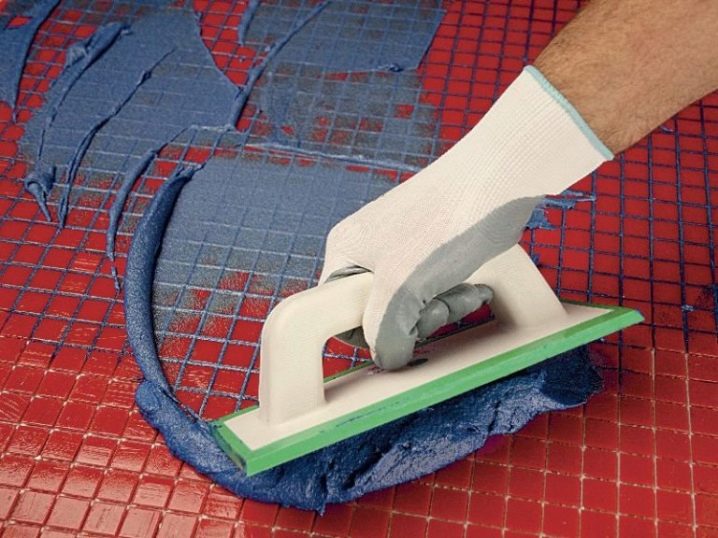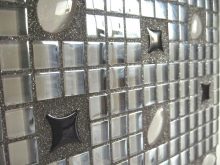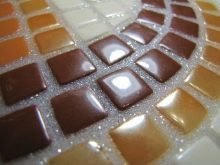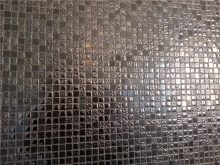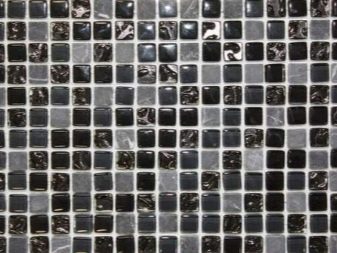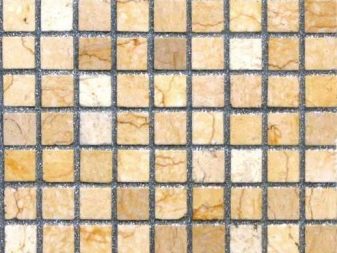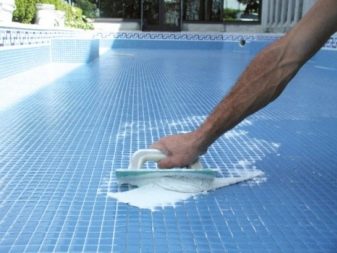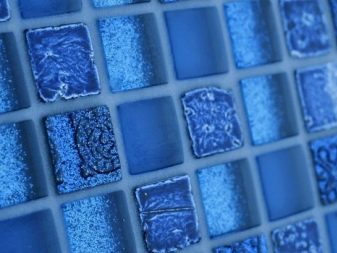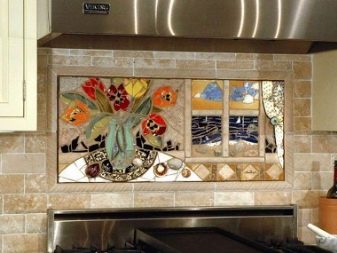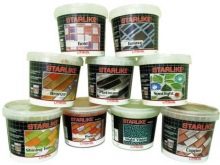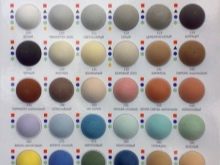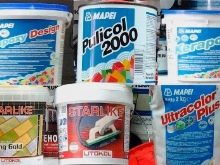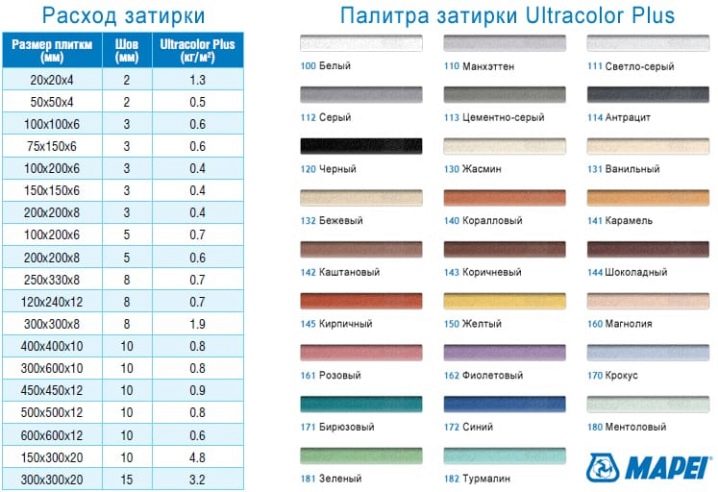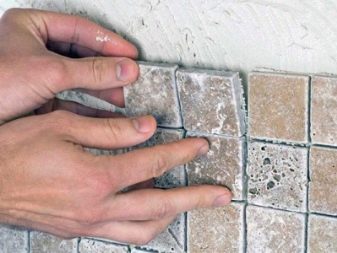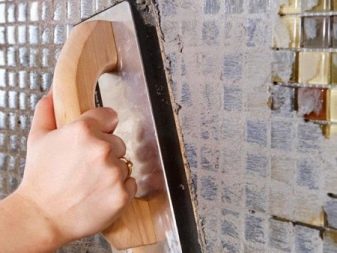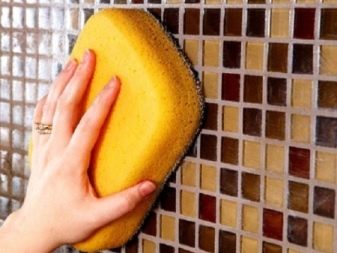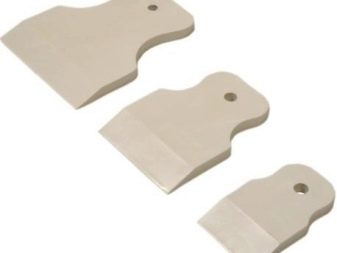Grout for mosaic: the choice and features of the application
Grouting the tiles after laying the mosaic will help make it look more attractive, ensure the integrity of the coating and protect it from moisture, dirt and fungus in wet areas. Grout, in fact, is a separate decorative element, so you need to pay due attention to its choice and installation.
Special features
A feature of the mosaic is a large number of seams that need to be covered with a special compound. In this regard, the consumption of grout will be more than for the same area with tile.
It is important to remember that the grout in color will accentuate the geometrical structure of the evenly laid mosaic, as well as the distortions. If before grouting small bumps are visible, then it is better to refrain from contrasting seams.
Kinds
In general, all grouting can be divided into two large groups:
- Traditional sand cement mix. It is used as a grout for a very long time and successfully. The availability and low price of components, as well as satisfactory indicators of strength and durability make it a universal trowel material for seams of 3-5 mm. For more comfortable work, plasticizers and stabilizers are introduced into such a mixture, and to obtain more moisture-resistant seams, they are kneaded on a latex basis.
The advantages of cement grout are:
- Low cost.
- Simplicity of work with materials.
- Easy removal of excess grout from mosaic or tile.
However, there are a number of negative points:
- Grout is not moisture resistant for rooms with high humidity.
- The presence of porosity in the seams, which leads to the accumulation of dust and dirt in them.
- Epoxy grout. Appearing not so long ago, it firmly took its place in the market, thanks to its durability and aesthetics. It is also called “two-component” because of the presence in the composition of the catalyst, packaged in a separate package. Before use, you must mix the grouting components with a catalyst to speed up the curing reaction and quickly fill the joints between the mosaic.
This option should be considered especially carefully when laying the mosaic for several reasons:
- Significantly longer service life compared to cement grout.
- Excellent moisture resistant performance. This coating is not afraid of fungus and dirt.
- More attractive appearance. The mixture can be left transparent, or it can be tinted in any color, add glitter or a light accumulative additive, which will highlight the mosaic from the inside.
- Grout is also resistant to sunlight, has excellent strength and wear-resistant properties.
However, the use of such a mixture without the skills of the master can ruin the entire appearance of the surface.
It is important to consider the following features of epoxy grout:
- Very fast drying mixture. Literally in 15-20 minutes it freezes on the surface of the tile and it is extremely difficult to clean it.
- Expensive compared to cement grout. However, to refresh the epoxy seams, in contrast to the first option will not have for several years.
Also, when working with epoxy grout, it is necessary to provide room ventilation, as there is a risk of toxic poisoning.
Colors
In order to emphasize the beauty of the mosaic or tile, you must consider the color of the composition for grouting.
To choose the right tone will help a few tips:
- The general rule for the treatment of joints is that the grout should be one or more shades darker than the base color of the mosaic. Such a choice will provide a harmonious and pleasant view of the walls or floor;
- On kitchen surfaces or on the floor, light shades of grout should be avoided, as they will quickly become dirty (especially when using cement mixes) and will look sloppy;
- For glass mosaics or photo panels, it is advisable to choose a colorless epoxy grout. It will not be noticeable, and all attention will be focused on the beautiful wall;
- Before applying the mass on all the seams, it is necessary to try the composition on a small area of the area and evaluate the appearance. Perhaps the result will be different from the expected.
Options for colors and shades for grouting quite a lot. Particularly wide range of composition has an epoxy base. You can find commercially available compositions with a monochrome, gold or even black mass.However, it should be remembered that the grout is designed to emphasize the aesthetic appearance of the mosaic, speaking an important but secondary element of the finish.
When in doubt about the choice of color, you should focus on the universal white or shade, which is slightly darker than the basic tone of the mosaic. Sometimes the contrasting color of the grout (for example, black on a white mosaic) allows you to make it brighter and juicier, but it is better to entrust such experiments to a competent designer.
Which one to choose?
The choice of grout composition depends on several factors:
- Type of room. Traditionally, the mosaic pattern on the grid is present in rooms with high humidity - bath, pool, sauna. But also the mosaic looks good as a facing of fireplaces, and in some cases its presence is appropriate not only on the walls, but also on the floor. Another option for the use of mosaics - decorating garden ponds, paths and decoration of the infield.
When placed in a wet, aggressive environment or on the street, the mosaic itself and the seams will be exposed to fungi, moisture, wind, rain, etc. Therefore, epoxy grout is suitable for these options, which will last for a long time without replacement and redecoration.If it is, for example, a wall in a room that performs a decorative function, then you can work using sand-cement grout.
- Transparency. Modern grout does not have to have color. It may be colorless. The colorless composition gives a special beauty to a mirror or marble mosaic, without distracting attention to itself. However, only epoxy-based mixtures have transparency.
- Durability. When comparing the two groups of epoxy grout, of course, wins in durability. If the cement in a few years requires redecoration and refreshment, then the epoxy mixture can be removed except with tiles or mosaics for new repairs. And the choice in favor of the epoxy composition at the repair stage can save a lot of time and nerves in the future, especially for kitchen wooden surfaces and floors.
- Trademark. The market is replete with both types of rubbing compounds. Some of them added components that improve the physicomechanical properties of the grout, make it easier to work with them, reduce material consumption during operation, or allow you to easily remove the remnants of the composition from the surface of the mosaic.Experienced masters and novice experts eagerly share their feedback, thanks to which you can choose the grout to your liking.
- Temperature conditions The choice of the composition can also be influenced by the temperature regime of the room in which repairs are being carried out. In warm and hot weather, it is easier to work with an epoxy compound, since it takes longer to cure and cure it. In cold rooms or in winter, it is better to use a cement mixture.
Consumption
The approximate consumption of grout depends on the geometric parameters of the mosaic - the length, width and height of each element, as well as the size of the seam between the tiles.
Primary calculation can be made according to the formula:
Consumption (kg / 1 m2) = (l + b) / (l * b) * h * t * e,
- l is the length of the tile, mm;
- b - tile width, mm;
- h is the tile thickness, mm;
- t is the seam width, mm;
- e - grout density, kg / dm³. Usually this parameter ranges from 1.5 to 1.8.
To the resulting consumption should be added 10-15%. This will be the required amount of materials.
When buying a trowel compound, you should pay attention to the fact that the whole volume has one production batch per package. Also on the packaging of many manufacturers indicated the approximate consumption of material, it also helps to make the right choice.
It should be recalled that on the same area for a mosaic the consumption of grout materials will be more than for a tile. This is due to the large number of elements. Epoxy grout is consumed more economically than cement. This is due to the fact that a large amount of sand-cement mixture remains on the surface of the mosaic and must be removed.
Also on the expense affects the qualifications of the master who performs the work. The more experienced a worker, the more economically he spends material.
Application tips
In the absence of experience in laying and grouting tiles and mosaics, it will be reasonable to trust a qualified master: he will do the work in such a way that the seams on the wall or floor will for a long time please with their impeccable appearance. However, after a while it may well be necessary to wipe the damaged or lost appearance of the finish. There may also be a situation in which it is necessary to replace a cracked element. In this case, handy grouting skills will be useful.
Here are a few tricks to help you make a small repair correctly:
- From the time of fixing the mosaic to the application of grout should take at least a day.During this time, the glue will have time to dry, and it will be possible to erase the seams without the danger of peeling the mosaic.
- Before applying the trowel to the surface must be cleaned of dirt and remnants of cement or glue. For this purpose, water and a sponge of medium hardness are used, which will not damage the mosaic.
- Apply the compound should be a rubber spatula with diagonal movements from top to bottom. This will eliminate scratches on the decorative tile. In addition, a rubber tool, unlike a metal one, makes it possible to deepen the grout by 1-2 mm from the mosaic level, which gives a more refined and aesthetic look to the finished coating.
- In the process of work it is necessary to constantly moisten the grout joints in order to prevent cracks. Usually used for these purposes spray.
- No more than 20 minutes after grouting, it is necessary to remove the remnants of the composition from the surface. In the case of a cement mixture, sufficiently repeated wiping with a wet sponge. Epoxy composition is removed more easily if the mosaic is pretreated with a special composition that forms a polymer film.
Additional instructions that depend on the type of grout can be found on its packaging.If you do everything as recommended by the manufacturer, then a good result is usually guaranteed.
On one of the easiest ways to grout joints on a mosaic, see the following video.
